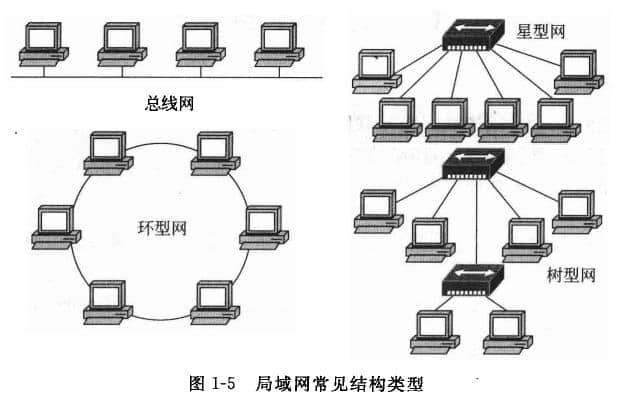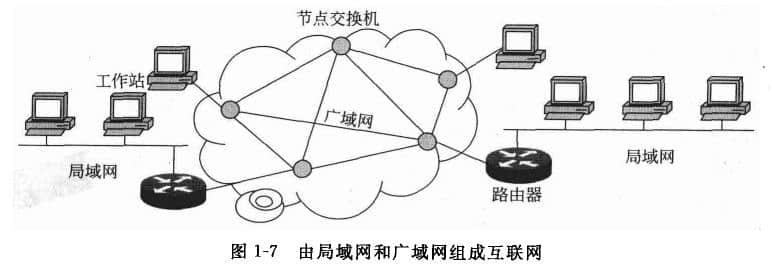What are the classifications of computer networks?
Source: Shangpin China |
Type: website encyclopedia |
Time: 2015-06-18
There are many types of computer networks from different perspectives Website production The network classification principles can include the following classification methods. (1) According to its geographical scope, it can be divided into local area network (LAN), wide area network (WAN), metropolitan area network (MAN) and Internet. (2) According to the topological structure of the network, it can be divided into bus network, ring network, star network, tree network and mesh network. (3) According to media access technology: Ethernet and TokenRing. (4) According to transmission medium, it can be divided into wired network and wireless network. (5) According to different operating systems: UNIX network, Novell network, IBM LAN network, DECnet network, AppleTalk network, Microsoft LAN network, etc. (6) By use: public network, private network and intranet. There are other classifications of computer networks, which will not be listed here. No matter what kind of classification, it has no great practical significance for the computer network itself. They are just different perspectives when discussing problems. However, from the perspective of network definition, network composition or communication technology, professionals are more willing to interpret computer networks in a broad sense, that is, according to the hard cover geographical range division. Because the above other classification methods focus more on one aspect of the network, and cannot cover the characteristics defined previously for computer networks. How to define the LAN, WAN, MAN and Internet divided by hard cover geographical scope? Specific analysis will be carried out below. LAN The so-called Local Area Network (LAN) is a network in a local area, which covers a small area. There is no limit on the number of computers configured in the LAN, which can be as few as a few or as many as a few hundred. The distance involved in the network generally ranges from several meters to several thousand meters. LAN is generally located in one or several buildings or one unit. Local area network is to connect individual computer systems (or terminals) and receiving equipment with each other by means of communication media, follow certain communication protocols, exchange information and realize resource sharing. LAN features: (1) It has high transmission bandwidth and high data transmission rate, which is generally 100Mbps or above at present. (2) Reliable data transmission and low bit error rate. (3) The LAN network has a simple structure, which can be bus type, ring type, star type or tree type (that is, a combination of multiple star types). As shown in Figure 1-5, it is easy to implement and generally uses broadcast links. (4) It is usually owned and used by a single organization, and is not restricted by the organization of the public network. It is easy to update equipment and use the latest technology. WAN Wide Area Network (WAN) covers a much larger area than LAN, reaching more than 100 kilometers. It can be a region, a country or even the whole world. Wide area network can connect multiple cities, countries or across several continents, and provide long-distance communication to form an international remote network. WAN features: (1) WAN consists of node switches and links connecting these switches. (2) Node switches have the function of packet storage and forwarding, and all nodes are point-to-point communication links. (3) In order to improve the reliability of network communication, one node is usually connected to multiple nodes. The adjacent nodes can communicate directly, while the communication between non adjacent nodes needs to be forwarded through several intermediate nodes, as shown in Figure 1-6. (4) WAN often adopts channel multiplexing technology (see 2 2. 4) to improve the utilization of transmission lines. The main problems that WAN solves are path selection and packet forwarding. Due to the high cost of WAN, it is generally funded by the state or large telecommunications companies. Public Telephone Network (PSTN), Integrated Services Digital Network (ISDN) DDN network, frame relay network and so on all belong to the scope of WAN concept. Metropolitan area network The connection distance of Metropolitan Area Network (MAN) is 10-100 kilometers, and its scale is between LAN and WAN. In geographical scope, MAN is the extension of LAN network; Technically, MAN usually uses the same technology as LAN, but it is a public network. MAN is generally limited to a large city or metropolitan area, and it is a high-speed, high-quality data communication network Network is used to meet the demand of the city for data, voice, video, multimedia and other applications. The difference between MAN and LAN, WAN is as follows: (1) LAN or WAN usually serves a unit or system, while MAN serves the whole city rather than a specific department. (2) The construction of LAN or WAN includes resource subnet and communication subnet. The construction of MAN mainly focuses on the communication subnet, which is composed of two aspects. One is the urban backbone network, which is connected with the national backbone network, and the other is the urban access network, which connects all the connected users in the city with the urban backbone network. With the continuous improvement of LAN performance and the development of LAN technology, LAN continues to penetrate and apply to the MAN field For example, the transmission distance of Gb Ethernet has reached 40 kilometers, and it has been well applied in the field of MAN. The development of LAN technology restricts the development of MAN to a certain extent, so in practical applications, the networking application technology involved is more about LAN. internet The international computer network formed by interconnecting the LAN and a single host through the WAN and communicating according to a certain communication protocol is the Internet, as shown in Figure 1-7. The network equipment used for interconnection between LAN and WAN is a host with special purpose, that is, router (see 3.2. for the working principle of router 6 sections). Internet features: (1) In the Internet, the interconnection between different networks is realized through routers. (2) The Internet is composed of multiple networks, which is different from the WAN. The WAN refers to a single network, which uses node switches to connect hosts rather than routers to connect networks. WAN and LAN are both important components of the Internet. Although their functions and communication distance are far from each other, from the perspective of the Internet, WAN and LAN are equal. To sum up, whether it is a LAN, WAN or MAN, it can be represented by a "cloud". Today's Internet is connected by many "cloud" networks through network interconnection devices, so the Internet can also be called "network of networks", as shown in Figure 1-8 (for the definition of the Internet, see the explanation of question 1-1 in Chapter 11).
Source Statement: This article is original or edited by Shangpin China's editors. If it needs to be reproduced, please indicate that it is from Shangpin China. The above contents (including pictures and words) are from the Internet. If there is any infringement, please contact us in time (010-60259772).










